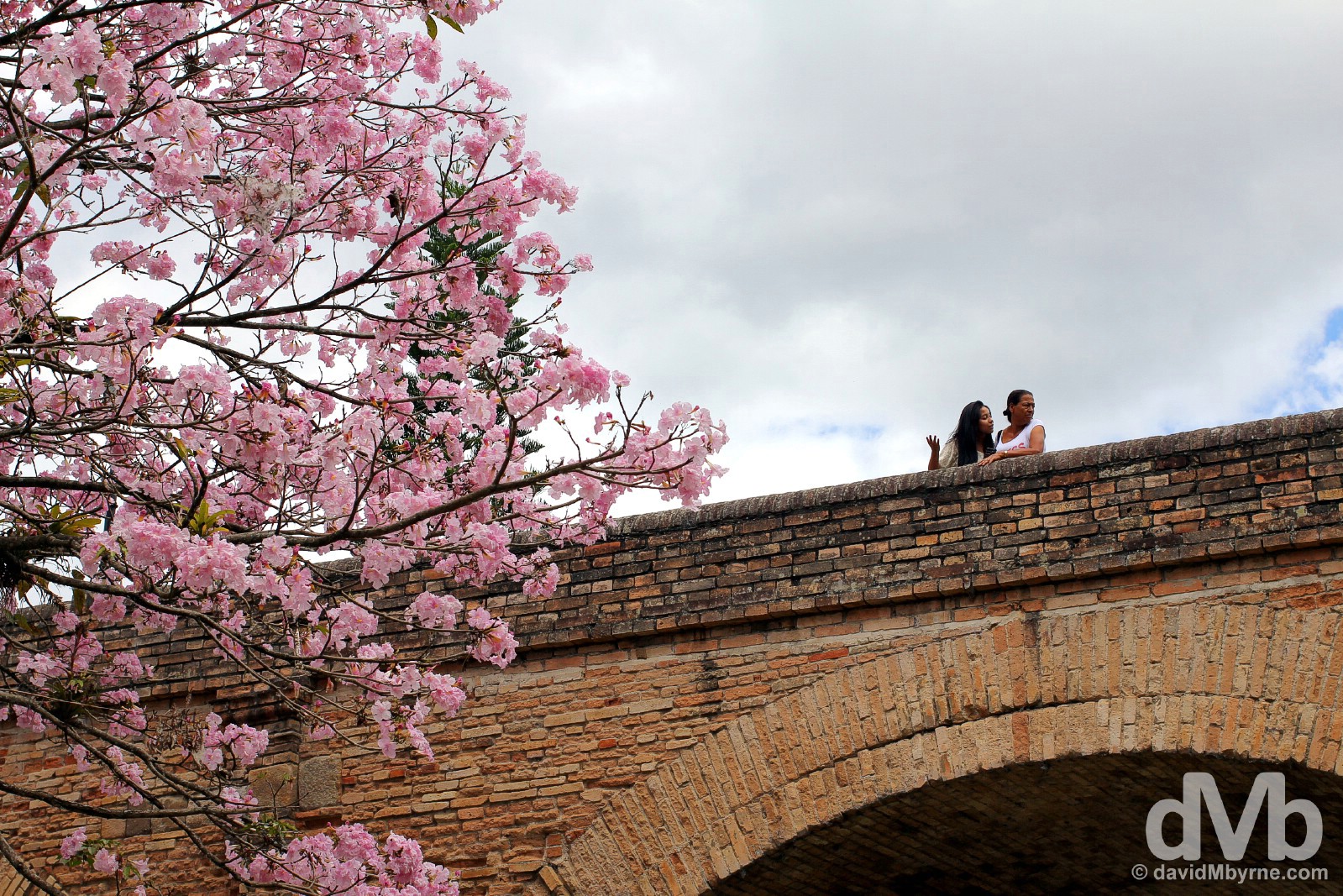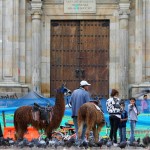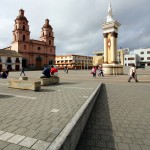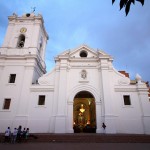Colombia
Twenty-Eight Images From A 2,000-kilometre, 10-Day, 6-Stop, North-To-South Trip Through Photogenic Colombia
Cartagena, Colombia. June 24, 2015
Colombia
 Colombia was epic. It was also quick; not fleeting quick but quick nonetheless. I wanted to spend more time in the country but I had a deadline for getting here to Quito, Ecuador, and having spent too much time loving myself stupid in the Caribbean meant Colombia only got 10 days of my time. I didn’t have time to blog as I travelled through the country, and now that I’m in Quito I don’t have the time either. I’ll eventually get around to adding some insights meat to this skeleton of an entry but for now here’s a selection of images, 28 in total, from my north-south, 2000 kilometre, 10-day, 6-stop Colombian odyssey.
Colombia was epic. It was also quick; not fleeting quick but quick nonetheless. I wanted to spend more time in the country but I had a deadline for getting here to Quito, Ecuador, and having spent too much time loving myself stupid in the Caribbean meant Colombia only got 10 days of my time. I didn’t have time to blog as I travelled through the country, and now that I’m in Quito I don’t have the time either. I’ll eventually get around to adding some insights meat to this skeleton of an entry but for now here’s a selection of images, 28 in total, from my north-south, 2000 kilometre, 10-day, 6-stop Colombian odyssey.
View all location postings as displayed in chronological order or jump to specific locations using these links.
Santa Marta || Cartagena || Medellin || Bogota || Popayan || Ipiales & The Border With Ecuador
The Complete Colombia Gallery
Couldn’t be bothered reading the post? Fine, I don’t blame you. Here are the pics.
- A section of the Metrocable & distinctive redbrick hillside buildings in Medellin, Colombia. June 27, 2015.
- Capriccio Cafe, Popayan Colombia. June 30, 2015.
- Plaza de Bolivar, Bogota, Colombia. June 29, 2015.
- A statue of Guillermo Valencia in the grounds of the Museo Guillermo Valencia with the city lookout of El Morro de Tulcan in the distance. Popayan, Colombia. June 30, 2015.
- The city of Bogota as seen from Cerro de Monserrate overlooking the city. Bogota, Colombia. June 28, 2015.
- Sunset light on buildings of Old Town as seen from Las Murallas, the Old Town walls of Cartagena, Colombia. June 24, 2015.
- The La Candelaria district in the historic centre of Bogota, Colombia. June 29, 2015.
- Outside Catedral in Old Town Cartagena, Colombia. June 24, 2015.
- A section of Las Murallas, the Old Town walls of Cartagena, at twilight. Cartagena, Colombia. June 24, 2015.
- Leaving Colombia. Ecuador as seen across the Colombian side of the Rumichaca bridge marking the Colombia/Ecuador border. July 2, 2015.
- Plaza Ipiales in the border town of Ipiales, southern Colombia. July 2, 2015.
- Colonial buildings, including the facade of Iglesia de San Pedro Claver, as seen from the corner of Plaza de la Aduana in Old Town Cartagena, Colombia. June 25, 2015.
- Sunset silhouettes on Las Murallas, the Old Town walls of Cartagena, Colombia. June 24, 2015.
- Admiring the views of Bogota from Cerro de Monserrate overlooking the city. Bogota, Colombia. June 28, 2015.
- El Santuario de las Lajas outside the border town of Ipiales, southern Colombia. July 2, 2015.
- Plaza de la Aduana in Old Town Cartagena, Colombia. June 25, 2015.
- Calle de la Estrella, Old Town, Cartagena Colombia. June 25, 2015.
- Cathedral, Santa Marta, Colombia. June 23, 2015.
- Admiring the piece ‘Maribarbola, segun Velazquez’ by Fernando Botero in the Museo Botero, Bogota, Colombia. June 28, 2015.
- Puerta del Reloj in Old Town Cartagena, Colombia. June 25, 2015.
- Castillo de San Felipe de Barajas overlooking the city of Cartagena, Colombia. June 25, 2015.
- New & old. New Cartagena as seen from a section of Las Murallas, the Old Town walls. Cartagena, Colombia. June 24, 2015.
- In the rejuvenated Germania district of Bogota, Colombia. June 28, 2015.
- Puente del Humilladero in Popayan, southern Colombia. June 30, 2015.
- Waiting for the overnight bus to Bogota in Terminal del Norte, Medillin, Colombia. June 27, 2015.
- Parque Caldas in Popayan, southern Colombia. June 30, 2015.
- Juan Valdez Cafe off Parque Caldas in Popayan, Colombia. June 30, 2015.
- Calle 5, Popayan, Colombia. June 30, 2015.
Santa Marta
My first stop in Colombia after crossing the border from Venezuela was Santa Marta. Dating to 1525, this is the earliest surviving town from Colombia’s colonial Spanish days. Today it’s a busy commercial port & tourist city that’s especially popular with diving types. For me it was a classic case of passing through; I had just an evening here, one which I spent looking around the compact and narrow streets of the city’s old centre. It was a nice albeit brief introduction to the country.

Santa Marta’s Cathedral seen shortly after sunset. The massive, blindingly white Renaissance-style structure, supposedly Colombia’s oldest church, was completed in 1766 after a 30 year construction. From 1830 it held the remains of the Latin American liberator Simon Boivar (they were removed in 1842 to Caracas, Venezuela, his birthplace) & today it still houses the remains of other rulers, bishops and leaders, including that of Donn Rodrigo de Bastidas, Santa Marta’s founder. Santa Marta, Colombia. June 23, 2015.
Cartagena
It is somewhat incredulous to think that I hadn’t initially planned a visit to Cartagena, not only one of Colombia’s main draws but also as one of Latin America’s most historic & photogenic colonial cities. Not surprisingly the city, specifically its UNESCO-listed walled old town, turned out to be the photographic highlight of a very photogenic Colombia – 10 of the 28 pictures presented here are from my time in sizzling hot Cartagena. I’d have been mad to miss the city, as would anyone who is visiting Colombia. Just be warned, you won’t be alone in savouring what is the country’s most popular tourist centre.

Outside Catedral in Old Town Cartagena, Colombia. June 24, 2015.

Photographs at the massive Colombian flag of colonial-era fort Castillo de San Felipe de Barajas overlooking the city. It was breezy up here, about the only place in the city I got a reprieve from the sweltering heat – Cartagena is a notoriously hot city. Cartagena, Colombia. June 25, 2015.

Puerta del Reloj, the ceremonial entrance to the Old Town of Cartagena, Colombia. June 25, 2015.

Plaza de la Aduana in Old Town Cartagena, Colombia. June 25, 2015.

Colonial buildings, including the facade of Iglesia de San Pedro Claver, as seen from the corner of Plaza de la Aduana in Old Town Cartagena, Colombia. June 25, 2015.

New & old. Towers of new Cartagena as seen from a section of Las Murallas, the Old Town walls. Cartagena, Colombia. June 24, 2015.

Calle de la Estrella, Old Town, Cartagena Colombia. June 25, 2015.
Cartagena is photogenic any time of day but really shines come sunset, easily the best time of day to find yourself wielding a camera in the city.

Sunset light on buildings of Old Town as seen from Las Murallas, the Old Town walls of Cartagena, Colombia. June 24, 2015.

Sunset silhouettes on the breezy Las Murallas, the Old Town walls of Cartagena, Colombia. June 24, 2015.

A section of Las Murallas, the Old Town walls of Cartagena, at twilight. Cartagena, Colombia. June 24, 2015.
Medellin
The first of my Colombian overnight bus journeys got me south from Catagena to Medellin. I witnessed a shooting within minutes of arriving in the city off the bus, easily the definitive memory of my time in Colombia’s second city. Once the world’s most murderous city & a no-go zone for foreigners until the 1993 gunning down of drug lord & local boy Carlos Escobar, today Medellin, with its notorious past well behind it, is a laid-back, leafy city & important coffee centre. Yes, the coffee here is good, as it is all over Colombia.

There’s not a whole lot to do and see in Medellin. There are some nice colonial buildings in the heart of downtown but the city’s Metrocable, an extension of the elevated metro system serving the city neighbourhoods in the hills overlooking Medellin, is about the city’s only must-do activity, offering great views of the distinctive Medellin redbrick sprawl. Medellin, Colombia. June 27, 2015.

Captured in Medellin’s Terminal del Norte bus station waiting for the overnight bus to Bogota. Medillin, Colombia. June 27, 2015.
Bogota
After 2 months of sweat, sun & sunburn, I thought I was looking forward to the chill of Bogota, thought I was looking forward to dispensing with the flip-flops & shorts in favour of socks & some warm clothes. As it turns out I wasn’t. It was pretty miserable for the two days I spent in the Colombian capital. It was damp & chilly, both par for the course in Bogota in June, sitting as it does at an altitude of over 2300 metres high in the Colombian Andes. Yes, Bogota was also to be my very first taste of the mountain range that runs for some 8,000 kilometres along the South American continent’s Pacific coast.

The La Candelaria district in the historic centre of Bogota, Colombia. June 29, 2015.

Admiring the piece ‘Maribarbola, segun Velazquez’ by Fernando Botero in the Museo Botero, Bogota, Colombia. June 28, 2015.
The chill aside, I enjoyed Bogota, a city of contrasts where modern-day high-rises tower over the remnants of the Spanish colonial past. I also found the city, the drab conditions aside, quite photogenic. I just didn’t enjoy being cold and covering up after 2 months of dressing like a beach bum.

Captured in Bogota’s pigeon-infested Plaza de Bolivar, the historic centre of the city and from where present-day Bogota spread (and spread far). It was here I got my first glimpse of a llama, that most quintessential of Andean South America fauna (for the record, a llama is a wild or domesticated cud-chewer that’s related to the camel but is much smaller and lacks a hump). In the background is a section of the massive facade of the city’s Cathedral, Colombia’s largest church, which overlooks the square. Plaza de Bolivar, Bogota, Colombia. June 29, 2015.

Colourful buildings in the rejuvenated Germania district of Bogota, Colombia. June 28, 2015.

Admiring the views of Bogota from Cerro de Monserrate, a 3200 metre-high landmark mountain overlooking the city, atop of which is the white Basílica del Señor de Monserrate. Bogota, Colombia. June 28, 2015.

The city of Bogota, South America’s third largest urban centre (after Sao Paulo, Brazil & Lima, Peru), as seen from Cerro de Monserrate. Bogota, Colombia. June 28, 2015.
Popayan
Another overnight bus trip from Bogota got me to Popayan, a.k.a The White City, a city of stunning, blindingly white colonial buildings, second only to Cartagena as a Colombian colonial architectural showpiece. It was for this reason that I chose Popayan over Cali; heading south towards the boarder with Ecuador with some urgency meant I didn’t have time to visit both. Needless to say Popayan is quite photogenic, if a little bright. If you visit don’t forget to pack your camera, or your sunglasses.

Juan Valdez Cafe, a Colombian-based multinational coffeehouse chain, off Parque Caldas in Popayan. I spent a lot of time in these coffeehouses (I’m avoiding calling Juan Valdez Cafe chain Colombia’s Starbucks) just watching the Colombian life go by. It was never less than fascinating. Popayan, Colombia. June 30, 2015.

Looking down Calle 5. Popayan, Colombia. June 30, 2015.

Parque Caldas, Popayan, Colombia. June 30, 2015.

A statue of Colombian poet & Popayan local Guillermo Valencia (1873-1943) in the grounds of the Museo Guillermo Valencia with the city lookout of El Morro de Tulcan in the distance. Popayan, Colombia. June 30, 2015.

Puente del Humilladero, Popayan, Colombia. June 30, 2015.

Reading the Colombian daily broadsheet El Tiempo in Capriccio Cafe, Popayan, Colombia. June 30, 2015.
Ipiales & The Border
My last stop in Colombia was the border town of Ipiales, which I used to as an overnight break in the 14-hour, cross border journey from Popayan to Quito, Ecuador. As border towns go it’s not bad. Not bad at all, helped somewhat by its proximity to Colombia’s amazing Las Lajas Sanctuary.

Plaza Ipiales in the border town of Ipiales, Colombia. July 2, 2015.

A short taxi ride outside Ipiales is the Las Lajas Sanctuary, a Gothic cathedral that sits perched 100 metres above a gorge in the Guaitara River. The story goes that the Virgin Mary appeared on the stone gorge wall, curing a young girl & and old man of blindness in the process. Today, that (now holy) wall forms the back of the grey cathedral, a popular pilgrimage site & one that looks like it was picked right out of a fairy tale and dropped in the middle of the gorge. El Santuario de las Lajas outside the border town of Ipiales, Colombia. July 2, 2015.

The last shot from Colombia. Ecuador as seen across the Colombian side of the Rumichaca Bridge marking the Colombia/Ecuador border. This image was captured just after receiving my exit stamp from Colombian Immigration. Adios Colombia. July 2, 2015.




























